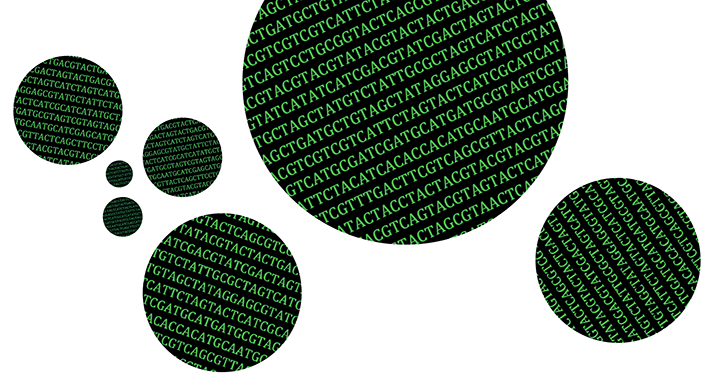The Human Genome Project was declared complete in 2003 to great applause from the scientific community. But then a big question quickly presented itself: how can we use the data? Time to think big. The 100,000 Genomes Project was launched by Genomics England in 2014 with the aim of sequencing and analyzing 100,000 genomes from patients and their families affected by cancer or rare diseases. We found out more from David Bentley, vice president and chief scientist at Illumina, who is leading a team at Illumina in Cambridge to help bring genome sequencing to the bedside, in partnership with Genomics England.

It can’t be as easy as it sounds – can it? The time is right to do it and the concept is easy to grasp, but we must remember this is the first time in the world that a project of this scale has been attempted. Several countries and organizations have been deliberating on this idea for some time, but the UK is the first to take the plunge. It’s difficult being right at the forefront because every problem you come across is new – and you have to solve it. The technology we’re using is Illumina’s HiSeq X Ten sequencer but it’s not just about instrumentation; the project requires a huge infrastructure to track the samples being collected from hospitals and the regional centers, log all the processes and quality-control steps, and monitor how we analyze the data afterwards. The scale of the 100,000 Genomes Project demands a significant level of process engineering beyond what the original research pipeline has been doing.
How did the project get started? Almost all disease has some genetic component. Some of it is obvious as the disease runs in families, and some is more complex like the genetics underlying breast cancer. But genetics play some part in almost every disease, which means that we would ultimately have to develop an almost infinite number of different tests to cover all diseases. Instead, the idea behind this project is to sequence the whole genome of each patient and learn how to extract the clinically useful (or actionable) information for each case. The Human Genome Project promised a great deal – many said early on that it had not delivered on this promise, but I believe people need to understand that it can take a long time to develop the necessary understanding and all the tools needed to make proper use of the reference sequencing. We have a fantastic human genome sequence - it’s just that we didn’t have the right tools to use it at the beginning.
How has technology advanced since the Human Genome Project? When I was a PhD student, I did manual sequencing using the Fred Sanger method. I sequenced one piece of DNA in a test tube, and if I wanted to sequence four pieces then I used four test tubes. The number of sequences I did at once was determined by the number of tubes I could handle. Fast forward to the Human Genome Project, and machines were used that could manipulate a hundred fragments at a time. Now, with our technology we can do five billion fragments at once in a single run on one HiSeqX machine.
How difficult is data interpretation? A genome has three billion bases and between three and four million of those are different between people… so we don’t have to analyze everything. What we need to look at are the bases that differ between diseased and non-diseased individuals. With computer systems and software you can then attach meaning to the differences – then you can discover which mutations occur within cancer genes or genes that may cause a genetic disease. Clearly, it’s not always so easy – cancer and many genetic diseases are highly complex, and we know much less about the underlying genetic factors that influence disease onset.
Will the project kickstart R&D in the pharma industry? Providing pharma companies with access to the Human Genome Project or 100,000 genome sequences is not enough. It is really important also to include clinical information associated with each genome – this is the role of the Genomics England clinical interpretation network that is part of the 100,000 Genomes Project.
What are your hopes? I really do believe that it will achieve a very long-held goal: introducing precision medicine. Using information from each genome, each patient, and all the results of the 100,000 Genomes Project in aggregate will massively increase the precision with which we understand and diagnose diseases of all kinds, and it will help doctors every day when they make diagnoses and take clinical decisions.
For more information about the 100,000 Genomes Project, visit www.genomicsengland.co.uk




